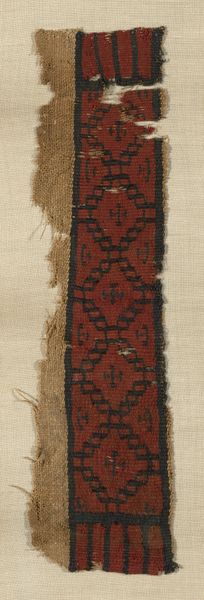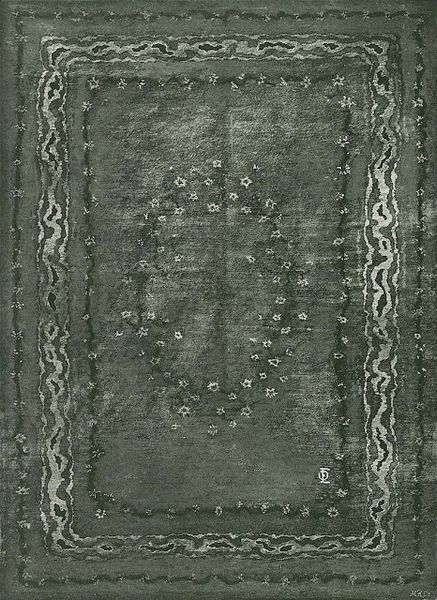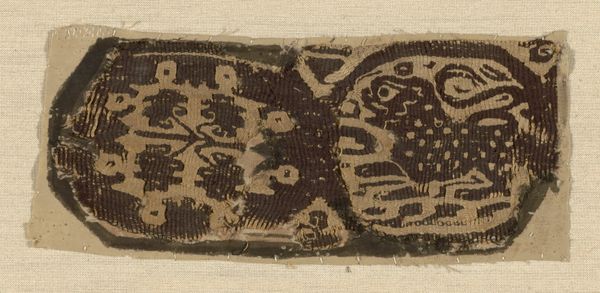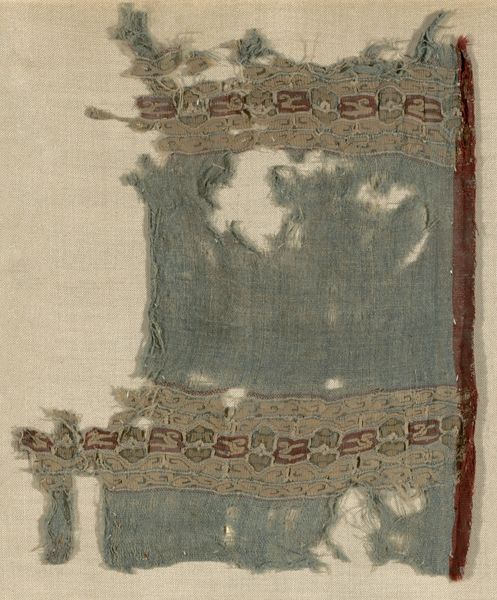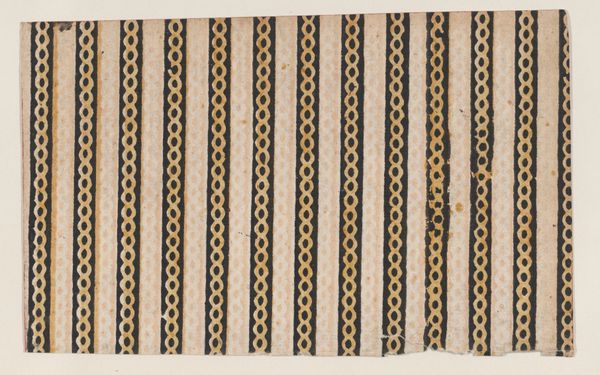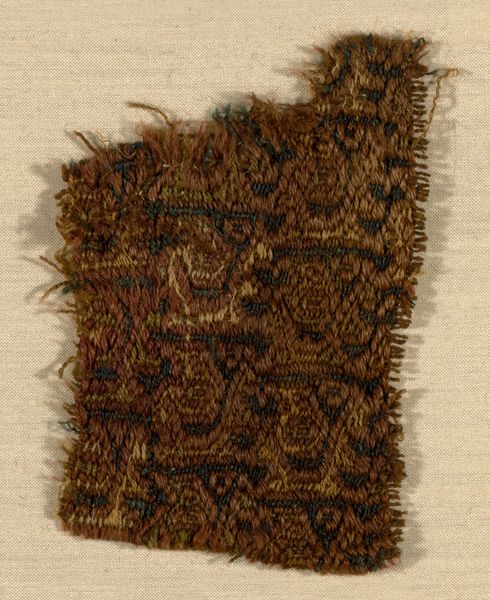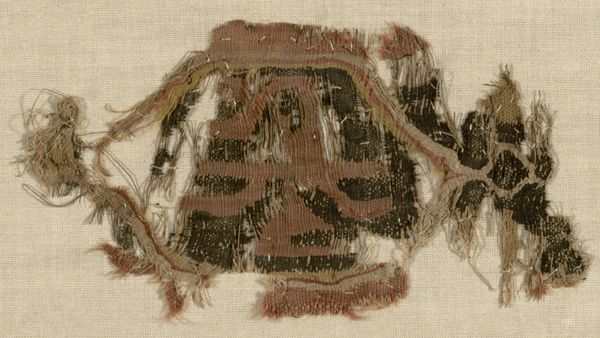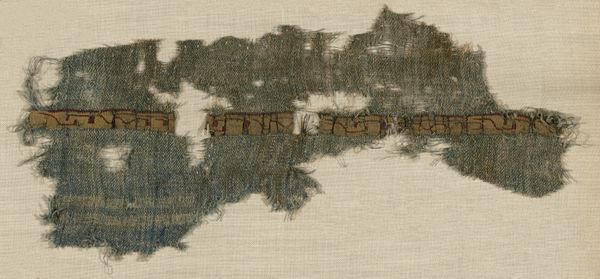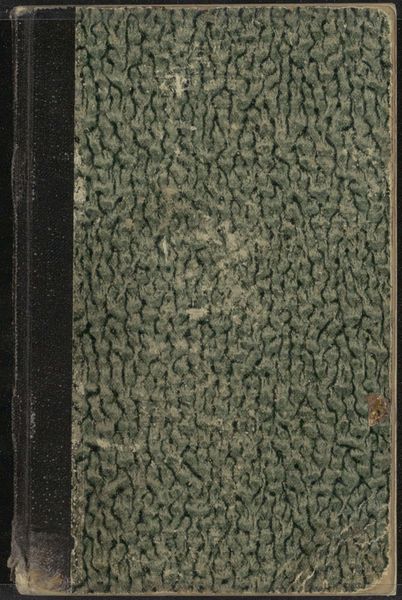
Fragment Greco–Roman period (30 B.C.– 641 A.D.), 4th/5th century
0:00
0:00
weaving, textile, wool
#
african-art
#
organic
#
weaving
#
textile
#
wool
#
animal print
#
text
#
organic pattern
#
ancient-mediterranean
#
line
#
natural texture
Dimensions: 26.0 × 3.2 cm (10 1/4 × 1 1/4 in.)
Copyright: Public Domain
Curator: Here we have a woven textile fragment of Coptic origin, likely dating to the 4th or 5th century during the Greco-Roman period. It is made from wool and is currently part of the Art Institute of Chicago's collection. Editor: Immediately, I'm struck by the rhythm in the pattern. The contrasting dark and light threads create these captivating visual sequences—organic shapes undulating within clearly defined borders. Curator: Indeed. We see a fascinating blend of influences. The Coptic weaving tradition often incorporated motifs and techniques from both ancient Egyptian and Greco-Roman cultures, creating a unique visual vocabulary reflecting a shifting identity under Roman rule. These textiles weren't just decorative; they held symbolic weight, reflecting the beliefs and status of their owners within a complex, often oppressive society. Editor: And yet, despite that oppressive context, the execution is wonderfully free. Look at the varying thicknesses of the lines, how they confidently carve out these biomorphic forms. I wonder what this fragment was part of; it suggests a larger narrative. Curator: Likely it adorned a garment, a curtain, or even a wall hanging, imbued with personal or religious significance for its owner. Considering the presence of similar textiles found in burial sites, these might have also functioned as shrouds, connecting individuals to their beliefs in the afterlife. Editor: The piece also embodies a kind of sophisticated textural conversation—the roughness of the weave contrasting with the smoothness of the depicted lines and shapes. It suggests a very knowing hand, deliberately playing with these properties. Curator: Precisely. These textiles are poignant reminders of the enduring creativity and agency of marginalized communities, expressing their identities and beliefs even amidst social upheaval. Editor: Reflecting on the fragment's form and texture illuminates how the weaver embraced linear variation and form to guide our eyes, hinting at something enduring within ephemerality. Curator: Yes, and through studying it we see a silent testament to the fusion of identity, craftsmanship, and historical moment in Coptic society.
Comments
No comments
Be the first to comment and join the conversation on the ultimate creative platform.



